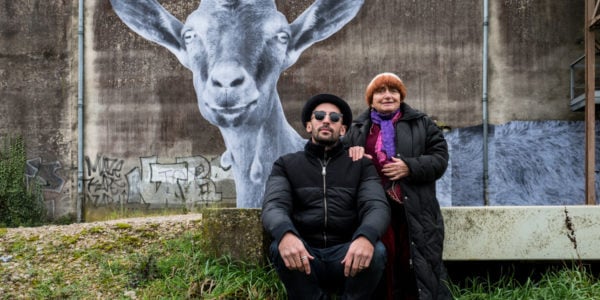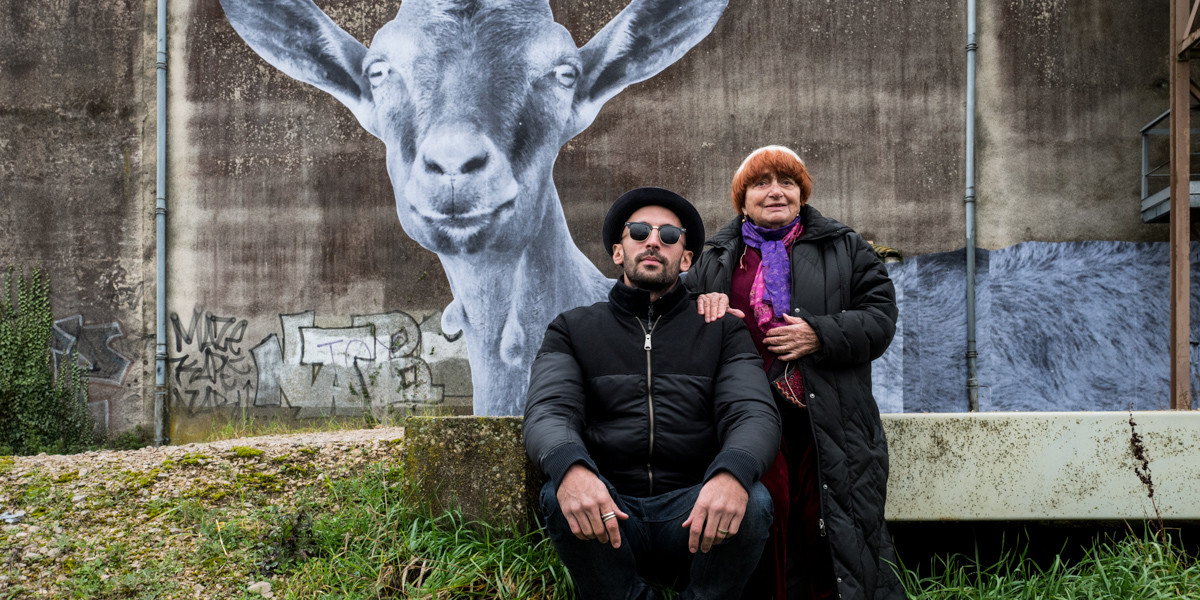
I’m new to Agnès Varda’s oeuvre, so in preparation for watching “Faces Places,” I decided to watch Varda’s “Cléo from 5 to 7” (1962), a snapshot of a singer named Cleo as she awaits the results of a biopsy. One of my favorite moments in the film occurs when Cleo, accustomed to singing pop songs, suddenly finds herself rehearsing a haunting ballad called “Sans Toi” (“Without You”). At the beginning of the scene, the camera is set up in a traditional three-shot, framing Cleo and her two lyricists around a piano. As Cleo starts singing, the camera zooms closer and closer into her face; the room falls away, and an invisible orchestral accompaniment swells in the background. Tears trail silently down Cleo’s face. The audience is witnessing something otherworldly, and we understand that this mirrors Cleo’s own melancholy and pain: a vulnerability that’s expansive, beyond life.
As “Sans Toi” comes to a close, the camera zooms out. The film returns to mundanity and our attention quickly becomes affixed on other matters. The movie mostly stays within Cleo’s perspective, and we soon realize that, despite the looming possibility of cancer, Cleo is easily distracted as she observes the world around her. In a restaurant, we spend a few minutes listening to the conversation of a young couple; during a taxi ride, our senses drift from the news on the radio to the view outside the window to the talk by the female taxi driver. The existential anxiety of “Sans Toi,” however, never quite leaves us; the close presence of death is apparent in Cleo’s melodramatic attitude and her superstitious tendencies. In fact, it’s the impending news of the biopsy results that seems to have made Cleo more acutely aware of the life around her. The strength of the movie lies in Cleo’s exploration of morality — even when we are focused on tangential characters and settings, we know that we are seeing it through the powerful lens of one woman’s changing understanding of life as she experiences a confrontation with death. Her gaze is a love letter to the world: “when I’m gone,” she asks, “what will it be like ‘sans toi’ — without you, and you, and you?”
“Faces Places” is similarly interested in the everyday lives that exists outside its two main protagonists, but in contrast to “Cléo from 5 to 7,” it sometimes forgets what makes the heart of the film really beat. In “Faces Places,” that strength is the relationship between Agnès Varda and the young photographer JR, who spend the film journeying around the French countryside, taking photographs of French villagers and blowing them up to magnificent proportions on buildings and other structures. The distraction is not necessarily Varda and JR’s earnest appreciation of humanity, but rather their confusing politics. Sometimes their efforts feel meaningful and powerful, as when historic photos of miners are pasted on mining residences slated for demolition, a testament to France’s working class. At other moments, Varda and JR only seem interested in the conceptual delight of magnification: in one village, they spontaneously pick a woman off the street to feature on a building in the town square, but their decision seems unmotivated by a greater humanist purpose, and in fact, instead of feeling empowered, the woman is frightened by her sudden exposure to publicity and celebrity. Murals and other kinds of wall art have always been inherently political, and Varda and JR certainly know this: Varda has made a documentary on the murals in Los Angeles (“Mur Mur”), while JR’s most famous works includes a giant photograph of a child overlooking a portion of the U.S.-Mexican border. Although we are intrigued by Varda and JR’s experimentation with their craft in “Faces Places,” it sometimes reads as careless when the two artists seem to forget the political significance of the choices they make in their macro-scale photography.
The premise that the film’s story is built upon might be ideologically shaky, but regardless, the documentary’s best element — the collaboration between Agnès Vardas and JR — still manages to find a way to delight us. Vardas and JR make an odd pair: Vardas is nearly 90 and her vision and physical stamina slowly fading away, while JR is 33 and full of millennial energy. Although they’ve barely met at the start of the film, their relationship quickly grows into witty banter, philosophical musings and occasional tenderness. “Faces Places” is not only about the intimacy that emerges between two artists as they collaborate on their life’s work — it’s also about the deep connections that can be forged between any two human beings despite their superficial differences. Although the documentary sometimes strays away from the relationship we find most worthwhile to watch, a scene near the end of the film encapsulates the message that “Faces Places” aims for, even when it doesn’t perfectly execute. Varda and JR, wanting to recreate the iconic scene in Jean-Luc Godard’s “Bande à parte,” travel in record speed through the galleries of the Louvre, JR pushing Varda in a wheelchair. As Varda and JR race through the halls, a voiceover by Varda identifies the paintings that they pass by, each one a glimpse into another kind of life. As in the rest of the documentary, Varda and JR are moved by the humanity that exists outside of their own as they look at the paintings on the wall. But in exploring their mutual curiosity in the human experience, it’s the bond that they forge — the laughter, the tears, the wisdom shared — that ultimately makes “Faces Places” a beautiful film.
Contact AnQi Yu at anqiyu ‘at’ stanford.edu.
